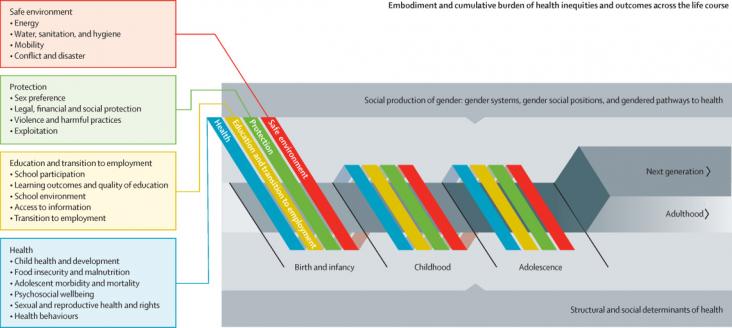
Background: By adulthood, gender inequalities in health and wellbeing are apparent. Yet, the timing and nature of gender inequalities during childhood and adolescence are less clear.

Iodide and bromide ions in surface and ground waters can react with natural organic matters and produce toxic disinfectant by-products. A novel bismuth composite material has been developed for the removal of iodides and bromides at parts per million concentrations.

This paper examines the global trends and main health impacts of these events based on databases and case studies, identifies gaps in the Sustainable Development Goals (SDGs) indicator framework for monitoring health impacts of disasters and suggests recommendations to address these gaps.
Change point analysis can reveal when a biomarker starts to diverge from the pattern of normal aging. This paper analyzes several biomarkers from the Alzheimer’s Disease Neuroimaging Initiative (ADNI) to estimate the sequence and timing of their change points relative to a subsequent clinical diagnosis of mild cognitive impairment (MCI) in subjects initially considered cognitively normal (CN).
Based on the responses of a nationwide survey, this article explores the significant impact that COVID 19 has had on radiologists across the nation and, in the context of SDG 3, the impact on their mental health.
Background: Circadian disturbances are commonly seen in people with Alzheimer's disease and have been reported in individuals without symptoms of dementia but with Alzheimer's pathology.
An article on the prevalence, risk factors, and management of dementia in older adults in China, in the context of SDG 3, highlighting the need for the development of a prevention strategy and optimising clinical management.
In this brief perspective piece, a rural sexual assault nurse examiner (SANE) program is described in the hopes that dissemination will lead to increased numbers of rural SANEs, increased reporting of sexual assaults in rural and underserved communities, increased prosecution rates of sexual assault perpetrators, and program sustainability through the provision of a nurse-centered approach to training and support. This article contributes SDGs 3, 5, 9, and 16.
Contributing to SDGs 3, 5 and 16, this paper examines the demographic profile of female victims with intellectual disablities who were sexually assaulted and the characteristics of sexual assault.
Advancing SDGs 3, 5 and 16, this article discusses increased risk of family violence during COVID-19 pandemic and suggests that collaborations between human welfare and animal welfare agencies, expanding community partnerships, and informing the public of the great importance of reporting any concerns of abuse are all critical at this time.
